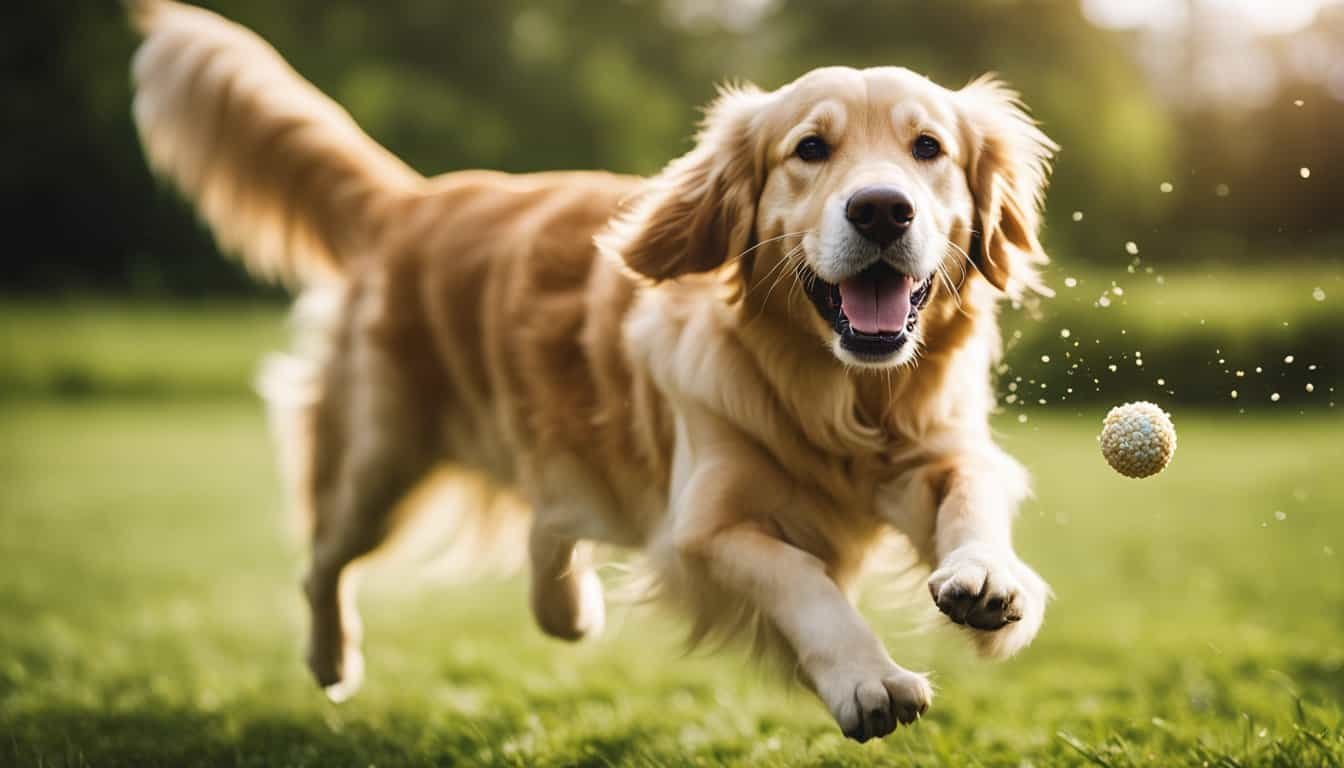The Ultimate Guide to Properly Using a Dog Crate: Tips and Tricks for Golden Retriever Owners
As a seasoned dog expert who has worked with thousands of dogs through shelters and breeders, nothing pains me more than seeing dog owners struggle with how to properly use a dog crate. While some may view it as a cage or a form of punishment, when used correctly, a dog crate can be a great tool for your furry friend’s safety and comfort.
In this article, we’ll cover the ins and outs of using a dog crate, including understanding their purpose, choosing the right crate for your Golden Retriever, introducing the crate to your dog, appropriate times to crate your dog, crate training tips, and how to maintain a positive crate experience.
If you’re a new dog owner and want to ensure a comfortable and positive experience for your furry friend, read on to discover the right way to use a dog crate.
Understanding the purpose of dog crates
Dog crates are a valuable tool for both the safety and comfort of your furry friend. As someone who has worked with thousands of dogs through dog shelters and breeders, I have seen firsthand the benefits that crating can provide.
First and foremost, crates offer a safe space for your dog to call their own. In the wild, dogs seek out dens as a place to rest and feel secure. A crate mimics this natural instinct by providing an enclosed area where your pup can relax without fear or distraction.
Additionally, crates can be used as part of house training efforts. Dogs naturally avoid soiling their sleeping areas, making it easier to train them to hold their bladder until they are let outside.
It’s important to note that while crating is beneficial in many situations (such as when you’re away from home or during travel), it should never be used as punishment or isolation from human interaction. Your dog should view their crate positively and willingly enter it on command.
Overall, understanding the purpose of a dog crate is key in effectively using one with your Golden Retriever (or any other breed). By providing them with a comfortable den-like space all while promoting good behavior habits during training – you’ll ensure both they stay happy healthy pets!
Choosing the right crate for your dog
Choosing the right crate for your dog is an essential part of providing a safe and comfortable environment for your furry friend. As someone who has worked with thousands of dogs through dog shelters and breeders, I have seen firsthand how proper crate training can make a significant difference in a dog’s behavior.
The first step in choosing the right crate is to consider the size of your Golden Retriever. You want to ensure that there is enough space for them to stand up, turn around, and lie down comfortably. A rule of thumb when selecting a crate size is that it should be at least 6 inches longer than their body length and high enough so they can sit without touching their head on the roof.
Another important factor to consider when choosing a crate is its material. Plastic crates are typically more durable but may be heavier than metal ones made from aluminum or wire mesh. Soft-sided crates can provide more comfort, but they may not hold up as well over time.
As you begin using the crate, remember that it should never be used as punishment or confinement for long periods without breaks or exercise opportunities every few hours throughout each day; otherwise crating becomes cruel instead helpful in teaching them good habits like potty training better manners while alone inside home etcetera – depending on owner goals!
In conclusion: Properly using crating practices helps teach dogs good habits like potty-training & sleeping routines necessary for healthy relationships between pets & owners alike!
How to properly introduce your dog to the crate
Introducing your new furry friend to a crate can be an essential part of their training and development, but it must be done correctly. As someone who has worked with thousands of dogs through dog shelters and breeders, I have seen firsthand the benefits of properly introducing a crate to your Golden Retriever.

« training golden retriever to come
stop golden retriever destructive chewing »
Firstly, it’s crucial to choose the right size crate for your pup. It should be large enough for them to stand up, turn around and lay down comfortably but not too big that they can use one corner as a bathroom or another corner as their play area.
Next step is all about positive reinforcement! Make sure you associate positivity with the crate by placing tasty treats inside or feeding meals near its entrance. Start slowly by having short periods where you close the door while you are in plain sight so they feel safe during this time alone.
It’s also important not to force your pup into the crate; instead allow them time on their own terms explore it when comfortable. A blanket over top may help create more privacy which some pups prefer than being exposed in open environments.
Finally remember consistency is key! The routine will help build trust between owner and animal – leading ultimately towards success in proper crating behaviors throughout life!
In conclusion: Proper introduction of crates can lead towards beneficial outcomes such as fewer accidents at home from housebreaking mistakes (which reduces anxiety), easier transport options when traveling together on road trips & even more overall happiness because dogs love having spaces just for themselves sometimes too!
When to crate your dog: Appropriate situations and timeframes
As a seasoned dog trainer who has worked with thousands of dogs through dog shelters and breeders, I strongly believe that crate training is an essential part of raising a well-behaved and confident Golden Retriever. However, it’s important to know when to crate your furry friend.
Firstly, crates should never be used as a form of punishment or confinement for extended periods. Crates should be seen as safe spaces for your pet where they can feel secure and relaxed.
It’s also important to consider the age of your pup before deciding when to start crate training. Generally speaking, puppies between 8-10 weeks old are ready for short intervals in their crates without becoming anxious or distressed.
When it comes to duration in the crate, younger pups need frequent breaks outside the confined space while older dogs can handle longer periods inside without issue. Depending on your schedule and lifestyle demands you may need more frequent potty breaks than others but generally speaking most adult dogs can comfortably stay crated up between four – eight hours at maximum.
Additionally if you’re introducing new pets into the household such as another puppy or cat its best practice early on so all animals understand its purpose from day one; however if you have an older dog who isn’t used being crated then gradually transitioning them into accepting this type environment by starting with shorter timeframes will benefit everyone involved long term!

In conclusion: When done correctly under appropriate circumstances (i.e., not using it as punishment), utilizing a dog crate is beneficial both for house-training purposes & providing comfort/security during travel times!
Create training tips and maintain a positive crate experience.
Crate training is an essential part of raising a well-behaved and happy Golden Retriever. However, it’s crucial to ensure that your furry friend has a positive experience while using the crate. Here are some tips for maintaining a positive crate experience for your canine companion.
Firstly, make sure that the crate is appropriately sized for your dog. A too-small crate can cause discomfort and anxiety, while one that’s too large may encourage your pup to use one end as their bathroom area.
Next up, introduce the crate gradually by letting them explore it at their own pace without forcing them inside. Place treats or toys inside the create so they can associate it with positive experiences.
Once you start training them to enter and exit on command, reward good behavior with lots of praise or small treats (like pieces of chicken). This will help reinforce their understanding of what you’re asking from them.

It’s important not to use the create as punishment; instead allow dogs in there when they want space or when you need some time apart from each other – like if guests come over!
Finally keep in mind: don’t leave puppies unattended in crates longer than 3-4 hours at a time since this could lead towards negative associations with being crated all day long which will only perpetuate bad behavior patterns down-the-line!
Overall remember patience is key when teaching any new skill especially something like Crate Training where both human AND animal must work together towards success!
Conclusion
Using dog crates is an important part of responsibly owning a dog. It can help with house training, decrease anxiety, and keep your pup safe if they have destructive habits or you need to leave them alone for a short time. If you’re a Golden Retriever owner who loves dogs, it’s important to equip yourself with the knowledge of how to properly care for your pup by using crates – from choosing the right crate size all the way through making sure that their experience in it remains positive. With this information at hand, you’ll be well on your way towards developing great loving relationships between friends and family!









